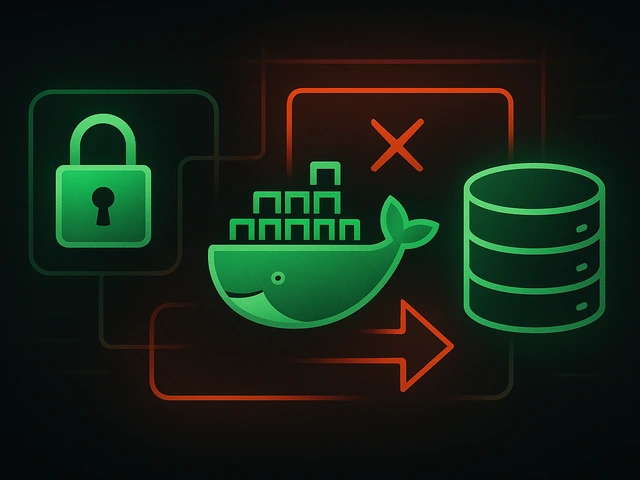
In the previous article, we considered several of the most popular operating systems that are usually chosen for installation on VPS servers. And today we want ...
3v-Hosting Blog
10 min read
Virtualization, an important part of modern computing, is often used without thinking about it. Today, Virtual Private Servers (VPS) are used for everything from personal blogs to business applications. They can be scaled up or down as needed, are flexible, and are more affordable than physical infrastructure. However, the transition to VPS hosting was not quick or easy. It is based on many years of changes in how computers are used, starting with mainframes and ending with containerized services. This article talks about how virtualization has developed, the technologies that made VPS possible, and the changes that transformed the industry.
The idea of virtualization was around before modern operating systems and cloud services. It started in the 1960s with time-sharing systems, which let many users share computing resources at the same time. In the past, computers were very big and expensive. It was necessary to use hardware efficiently.
In 1961, MIT's Compatible Time-Sharing System (CTSS) was the first time a computer was shared by many people at once. This system was the start of something that would eventually lead to virtualized environments. CTSS was the first to create isolated user sessions, which is one of the most important ideas in VPS.
Though these were not virtual machines in the modern sense, they introduced several important concepts:
- Resource partitioning
- User session isolation
- Concurrent execution
This era also birthed the idea that a single machine could appear as multiple logical machines to different users-an idea that would underpin future advances in virtualization.
The real leap forward came from IBM in the late 1960s. IBM introduced full hardware-level virtualization using a Virtual Machine Monitor (VMM) with the release of the System/360 Model 67, and later the System/370. These systems could copy many different types of computer environments and run them all on one main computer.
This led to the creation of the VM/370 operating system, which allowed multiple independent operating systems to run on a single machine. Each user could run their own OS separately, with complete control over their environment. This is the earliest form of what we now call a virtual machine.
Key features of this system included:
- Full hardware emulation
- Hypervisor layer (precursor to modern hypervisors like KVM, ESXi)
- Complete OS-level isolation
- The ability to run multiple operating systems concurrently
From a modern perspective, IBM’s work essentially invented server virtualization, and it’s no coincidence that decades later, enterprise virtualization still has strong ties to IBM systems.
While IBM was the leader in making mainframe computers virtual, a different kind of evolution was happening in Unix environments. In the 1970s and 80s, Unix systems started to use chroot, introduced in Unix Version 7 in 1979, to isolate processes.
chroot lets admins change the root directory for a process. This makes it seem like a different directory is the root directory. In other words, it creates a "jail" for a program to run in. This basic form of containment was a big step toward the idea of application-level virtualization.
Although chroot was never designed for security or virtualization per se, it inspired the development of more robust container-like environments such as:
- FreeBSD Jails (2000)
- Solaris Containers (2004)
- Linux Containers (LXC)
These environments would later evolve into modern container platforms, but more on that later.
In this era, Unix system administrators were beginning to envision a world where multiple isolated environments could co-exist on the same server-an early vision of VPS hosting.
By the 1990s, personal computers based on the x86 architecture were common, but they didn't have the same virtualization support as IBM's mainframes. This created a problem: how can you make full virtualization work on regular hardware that wasn't designed for it?
This was made possible by software-based virtualization, which used clever techniques to emulate how a guest OS would run, even without hardware support. One of the most important companies here was VMware, which was founded in 1998. VMware Workstation (released in 1999) was the first program that let you run more than one x86 operating system at the same time on a desktop.
This was soon followed by VMware ESX Server, a full Type-1 hypervisor aimed at servers. VMware’s solution transformed the industry by enabling:
- Server consolidation
- Hardware abstraction
- Rapid deployment of new environments
- Improved fault tolerance and redundancy
The emergence of virtual private server hosting was a direct outcome of these advances. Hosting providers could now divide a single powerful physical server into multiple isolated virtual machines, each with its own operating system and resources.
At this stage, the term VPS hosting began to enter mainstream IT vocabulary.
While VMware dominated the commercial space, open-source communities were developing their own alternatives. Notably:
- Xen (released in 2003) introduced paravirtualization, which offered better performance on x86 hardware.
- KVM (Kernel-based Virtual Machine), merged into the Linux kernel in 2007, became the de-facto standard for Linux-based virtualization.
These technologies made virtual private server solutions affordable and accessible. Hosting companies no longer needed expensive commercial licenses; they could build their infrastructure using open-source hypervisors and Linux-based management tools.
The ecosystem of VPS providers exploded in the late 2000s and early 2010s, giving rise to popular platforms such as:
- Linode (founded 2003)
- DigitalOcean (2011)
- Vultr (2014)
- 3v-Hosting (2016)
Each of these services capitalized on lightweight virtualization to offer developers cheap, flexible, and scalable server instances.
This era also coincided with the widespread adoption of cloud computing and DevOps, accelerating demand for isolated, reproducible server environments-exactly what VPS provided.
VPS hosting is still a basic service, but the introduction of containers has changed how virtualization is done. Containers are different from traditional virtual machines (VMs). VMs virtualize entire operating systems. Containers, on the other hand, offer process-level isolation while sharing the same kernel. This results in:
- Smaller resource footprint
- Faster startup times
- Improved portability
In 2013, Docker made containerization accessible to developers around the world. Kubernetes, released shortly after, introduced orchestration, which allowed for the large-scale deployment and management of containerized applications.
It's important to remember that containers are not a replacement for VPS, but rather a complementary layer. In many cloud infrastructures, containers run inside virtual machines, which run on physical servers.
So, the VPS model is still the main part of many modern structures, providing a flexible middle ground between bare-metal and containerized workloads.
Today, virtual private servers are ubiquitous. They power everything from game servers and e-commerce platforms to CI/CD pipelines and VPNs. Their popularity can be attributed to:
- Cost-effectiveness
- Customization
- Predictable performance
- Isolation from other users
Cloud providers like AWS (with EC2), Google Cloud (with Compute Engine), and Microsoft Azure all offer VPS-like instances, albeit under different branding and billing models.
At the same time, traditional VPS providers continue to thrive by offering:
- Root access and full control
- Simpler pricing models
- Regional presence and data sovereignty
- Developer-centric features (preset environments)
As virtualization continues to evolve with trends like edge computing, serverless, and confidential computing, the humble VPS remains a reliable and essential part of the digital ecosystem.
The change from large mainframe computers to fully isolated virtual environments is a story of continuous innovation. From IBM's VM/370 systems to modern KVM-based VPS hosting, virtualization has always pushed the limits of what can be done with hardware. VPS hosting is a great option because it's efficient, affordable, and flexible. It's the result of many years of improvements to hardware and software.
Virtualization will continue to play a key role in developing future technologies. The internet's infrastructure will continue to be shaped by three core principles from the 1960s: resource sharing, isolation, and scalability. These principles can be achieved through lightweight containers, microVMs, or cloud-native services.

Learn how IP addresses work: IPv4 vs IPv6, public and private IPs, DNS resolution, routing, security basics, and how IPs are used in real server and cloud infra...

Accelerating WordPress at the Nginx level: correct PHP-FPM settings, try_files, static files, caching, Brotli, wp-login protection, and secure headers for stabl...

Effective backup strategies for Docker applications: how to protect volumes, data, and configurations while avoiding common mistakes, and quickly restore servic...